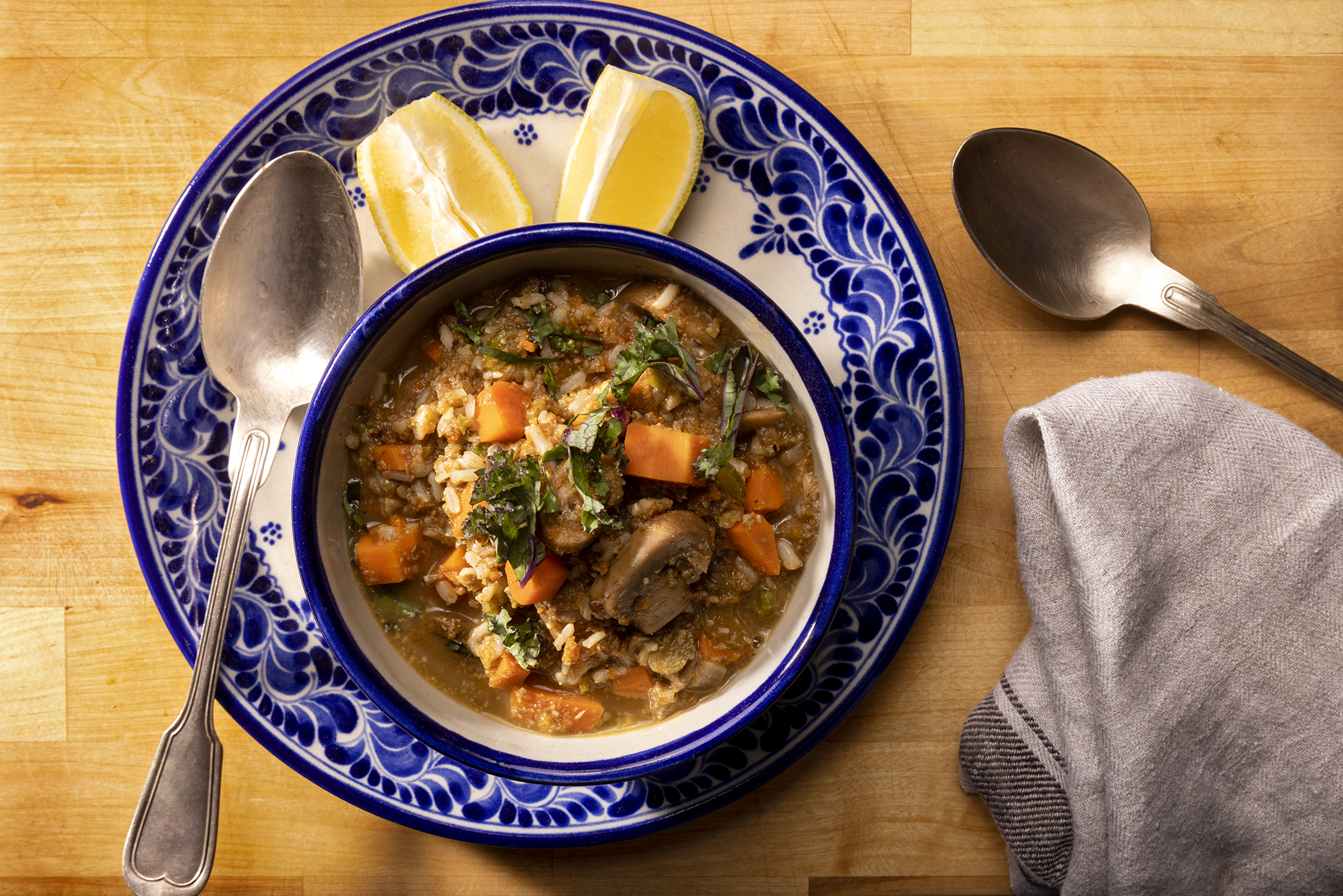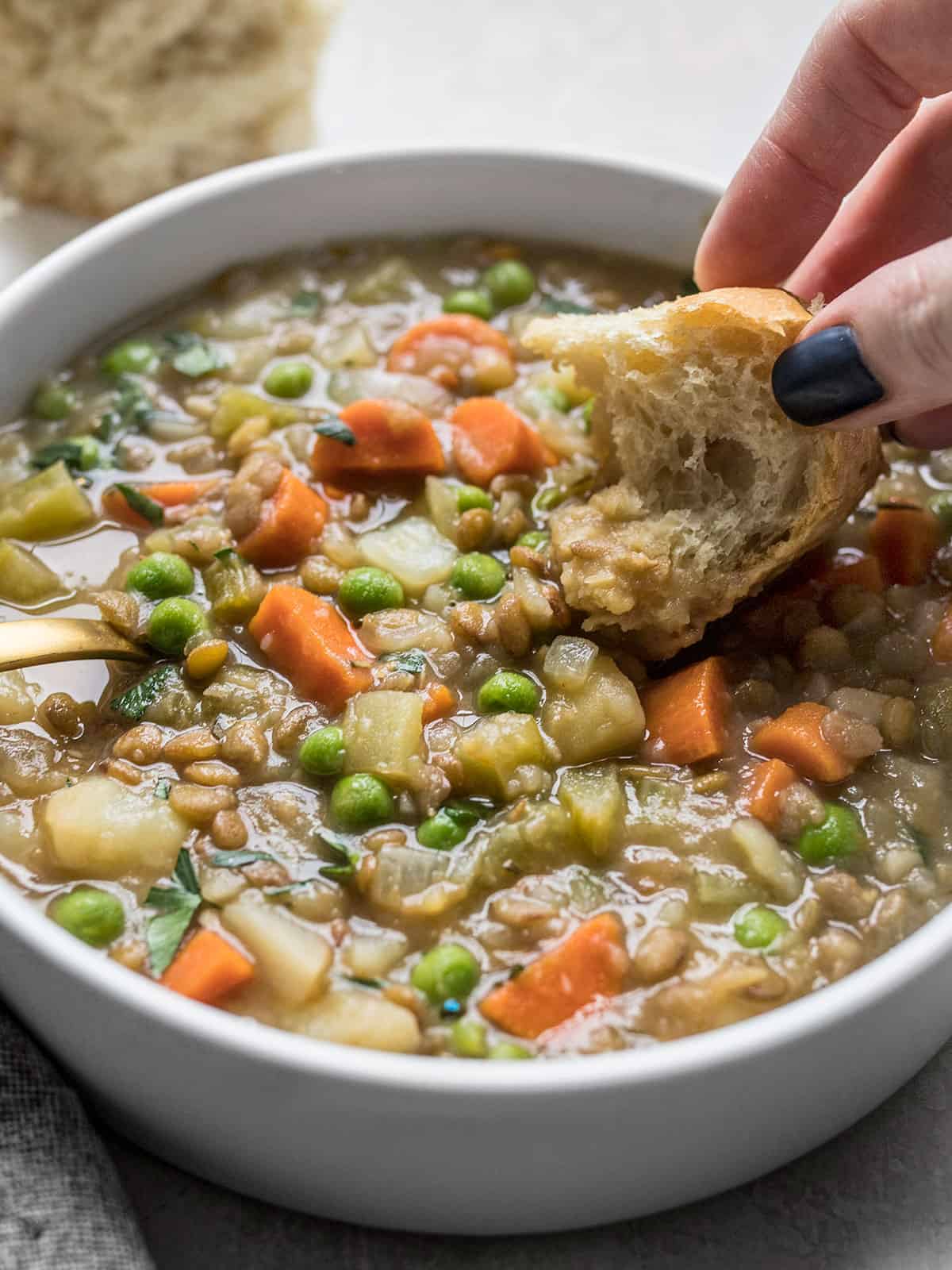Measuring ingredients for winter soups and stews is crucial for a delicious meal. Accurate measurements ensure the right taste, texture, and consistency.
Winter is the perfect time for hearty soups and stews. These dishes warm you up and provide comfort. But, getting the balance right can be tricky. Too much salt, or too little broth, can ruin the dish. Knowing how to measure each ingredient properly can make all the difference.
It helps you achieve the perfect flavor and consistency every time. Whether you are a novice or an experienced cook, mastering this skill is essential. In this guide, we will explore the best practices for measuring ingredients to create mouth-watering winter soups and stews.

Credit: dishingupthedirt.com
Essential Tools
Creating delicious winter soups and stews starts with measuring ingredients correctly. Accurate measurements ensure your dishes taste perfect every time. Essential tools like measuring cups and kitchen scales help achieve this goal.
Measuring Cups
Measuring cups come in two types: dry and liquid. Dry measuring cups are perfect for ingredients like flour and sugar. They allow you to level off the top for accuracy. Liquid measuring cups have a spout and extra space at the top. They prevent spills when measuring liquids like broth or milk.
Use the right type of measuring cup for each ingredient. This ensures precise measurements. For sticky ingredients, lightly grease the cup. This helps release the contents easily. Remember to check the measurements at eye level. This avoids misreading the amount.
Kitchen Scales
Kitchen scales offer the most precise measurements. They are essential for recipes requiring exact ingredient amounts. Digital scales are easy to use. They display measurements in grams or ounces. Place a bowl on the scale and press the tare button. This resets the scale to zero, so you only weigh the ingredients.
Weighing ingredients is especially useful for baking. Consistent measurements result in better texture and flavor. For example, one cup of flour can weigh differently each time. A kitchen scale eliminates this problem. Invest in a good quality scale for best results.
Dry Ingredients
Hey friends, when making winter soups and stews, getting your dry ingredients right is key. These ingredients can include spices, herbs, flour, and grains. Measuring them accurately can make a big difference in the flavor and texture of your dish. Let’s dive into how you can measure these dry ingredients perfectly.
Using Measuring Spoons
Let’s start with the basics—measuring spoons. These are essential for measuring small amounts of dry ingredients like spices and herbs. Here’s how to use them:
- Fill the spoon: Scoop your ingredient so the spoon is full.
- Level it off: Use the flat side of a knife or a straight edge to level off the excess.
- Don’t pack it in: For most ingredients, avoid packing the spoon. Just fill and level.
For example, when measuring cinnamon for your winter stew, fill your measuring spoon, then level it off. This ensures you get just the right amount of spice.
Measuring Flour And Grains
Now, let’s talk about flour and grains. These are a bit trickier because they can pack down easily. Here’s a simple method:
- Fluff the flour or grains: Use a spoon to fluff them in the container.
- Spoon into the measuring cup: Gently spoon the flour or grains into your measuring cup.
- Level it off: Use a straight edge to level off the top.
This method helps you avoid packing the flour or grains, which can lead to using too much. I recently tried this when making a hearty lentil stew, and it made a huge difference. My stew turned out just right!
Remember, these small steps in measuring can make your winter soups and stews taste amazing. So, grab those measuring spoons and cups, and happy cooking!
Liquid Ingredients
Liquid ingredients play a vital role in the flavor and consistency of winter soups and stews. The correct measurement can make the difference between a perfect dish and a mediocre one. Ensuring accuracy in measuring liquids is essential for achieving the desired taste and texture.
Measuring Liquids
Use a clear measuring cup designed for liquids. Place it on a flat surface. Bend down to eye level with the cup. Pour the liquid slowly. Stop when the liquid reaches the desired mark. This method helps ensure an accurate measurement.
Accuracy Tips
Always use the correct measuring tool. Dry measuring cups are not suitable for liquids. Use liquid measuring cups for precise results. Pour slowly to avoid spills and overfilling. Check the measurement at eye level. This prevents mistakes caused by looking from above.
For thicker liquids like syrup, use a spatula to scrape out the cup. This ensures you use the exact amount needed. Avoid measuring hot liquids directly. Let them cool first. This prevents burns and helps with accurate measurements.

Credit: rancholapuerta.com
Herbs And Spices
Herbs and spices can elevate the flavor of your winter soups and stews. They add depth, warmth, and complexity to your dishes. Measuring them correctly ensures your recipes turn out perfectly balanced every time.
Proper Measurements
Proper measurements are crucial for herbs and spices. Too much can overpower your dish, while too little can make it taste bland. Use measuring spoons for accuracy. For dried herbs and spices, level off the spoon for an exact measure. Fresh herbs can be a bit trickier. Pack them loosely into the measuring spoon to avoid over-measuring.
Fresh Vs. Dried
Fresh herbs and dried herbs have different flavor intensities. Fresh herbs are less concentrated, so you need more of them. A common rule is to use three times more fresh herbs than dried. For example, one teaspoon of dried basil equals one tablespoon of fresh basil.
Dried spices are more potent than fresh ones. They have a longer shelf life and are often more convenient. Fresh spices, like ginger or garlic, offer a more vibrant flavor but require more preparation. Choose based on your recipe and availability.
Proteins
Proteins are a key component of hearty winter soups and stews. They add depth, flavor, and essential nutrients. Measuring proteins accurately ensures a balanced dish. Let’s explore how to measure meat and seafood for your winter recipes.
Measuring Meat
Meat, such as beef or chicken, needs careful measuring. Use a kitchen scale for precise weight. Cut meat into even pieces for uniform cooking. Trim excess fat to keep the stew lean. Ground meat should be measured before cooking. This helps maintain the right consistency. For bone-in cuts, account for the weight of the bone. This ensures you have enough meat for the recipe.
Measuring Seafood
Seafood can be tricky to measure. Use a scale for accuracy. Shrimp, fish, and shellfish all cook differently. Measure each type separately. For shrimp, count by size. Small shrimp need more quantity. For fish, cut into uniform pieces. This helps even cooking. Remove shells and bones before measuring. This gives a true weight of the seafood. Always buy a bit more. Some loss happens during cleaning and prep.

Credit: www.budgetbytes.com
Vegetables
When making winter soups and stews, vegetables play a crucial role. They add flavor, texture, and nutrients. Measuring vegetables correctly ensures a balanced and delicious dish. Let’s explore the best ways to measure vegetables for your winter recipes.
Chopped Vs. Whole
Chopping vegetables changes their volume. A cup of whole carrots is not the same as a cup of chopped carrots. Always check if the recipe calls for whole or chopped vegetables. This detail affects the texture and taste of your stew.
For example, chopped onions release more flavor quickly. Whole onions take longer to break down. Understanding this helps you control the cooking process. It ensures every bite is consistent and flavorful.
Volume Measurements
Using volume measurements for vegetables can be tricky. A cup of diced potatoes weighs more than a cup of spinach. Always use the same method for each vegetable to keep your measurements accurate.
For leafy vegetables, pack them lightly in the measuring cup. For denser vegetables like carrots, pack them tightly. This consistency helps maintain the balance of flavors in your dish. Accurate measurements lead to better results every time.
Consistency And Texture
Hey friends, today we are diving into the world of winter soups and stews. Specifically, we are going to talk about how to measure ingredients to get the right consistency and texture. Consistency and texture are what make your soup creamy, chunky, or just perfect. The good news? It’s not as hard as it sounds. Let’s break it down step by step.
Balancing Ingredients
Getting the right balance of ingredients is key. Think of it like making a cake. Too much flour, and it’s dry. Too little, and it’s a gooey mess. The same goes for soups and stews. Here’s how you can balance your ingredients:
- Liquids: Water, broth, and milk are your main liquids. Start with the amount your recipe suggests.
- Veggies and Meat: These are your solids. Cut them into even sizes so they cook at the same rate.
- Spices: A little goes a long way. Always start small and add more as you go.
Tip: Measure your ingredients before you start cooking. This helps you keep track of what goes in and when.
Adjusting For Thickness
Sometimes, your soup might turn out too thick or too thin. Don’t worry, you can fix it. Here’s how:
- For Thick Soups: If your soup is too thick, just add more liquid. Water, broth, or even milk can help.
- For Thin Soups: If it’s too thin, you can add a thickener. Flour, cornstarch, or even mashed potatoes work great.
Example: I recently made a potato soup that was too thick. I added an extra cup of milk, and it turned out perfect. The best part? It was so creamy!
So, there you have it. The secret to perfect winter soups and stews is all in the consistency and texture. Start with balanced ingredients, and adjust as needed. Happy cooking!
Expert Tips
Creating winter soups and stews involves more than just tossing ingredients together. Accurate measurements play a crucial role in achieving the perfect taste and texture. Here are expert tips to help you measure ingredients correctly for your winter soups and stews.
Common Mistakes
One common mistake is using heaping cups instead of level cups. This can lead to too much or too little of an ingredient. Another mistake is not considering the density of ingredients. For example, flour and sugar pack differently in a cup. Yet another mistake is ignoring the importance of liquid measurements. Using a dry measuring cup for liquids can result in inaccurate measurements.
Pro Techniques
Use a kitchen scale for precise measurements. It’s more accurate than measuring cups. For liquids, always use a liquid measuring cup. It’s designed to measure fluids accurately. Level off dry ingredients with a straight edge. This ensures you’re not using too much. For sticky ingredients like honey or syrup, spray the measuring cup with oil first. This helps the ingredient slide out easily.
Frequently Asked Questions
How Much Stock To Use In Soup?
Use 4 cups of stock for every 2 cups of vegetables or meat. Adjust to your desired consistency.
What Is A Serving Of Homemade Soup?
A serving of homemade soup typically measures one cup or 8 ounces. Adjust portions based on personal preference and dietary needs.
What Is The Most Important Ingredient In Soup?
The most important ingredient in soup is the broth. It forms the base and determines the soup’s flavor.
How Do You Measure Soup?
Use a measuring cup to measure soup. Pour the soup into the cup to the desired level. Ensure accuracy by checking measurements on the cup’s side.
Conclusion
Measuring ingredients accurately ensures your winter soups and stews taste delicious. Use measuring cups and spoons for precise results. Remember to level off dry ingredients. Liquid ingredients need different measuring tools. Follow the recipe closely to maintain balance. Practice makes perfect.
Enjoy the warmth and comfort of home-cooked meals. Cooking with love always makes a difference. Happy cooking!

Rakib Sarwar is a seasoned professional blogger, writer, and digital marketer with over 12 years of experience in freelance writing and niche website development on Upwork. In addition to his expertise in content creation and online marketing, Rakib is a registered pharmacist. Currently, he works in the IT Division of Sonali Bank PLC, where he combines his diverse skill set to excel in his career.
